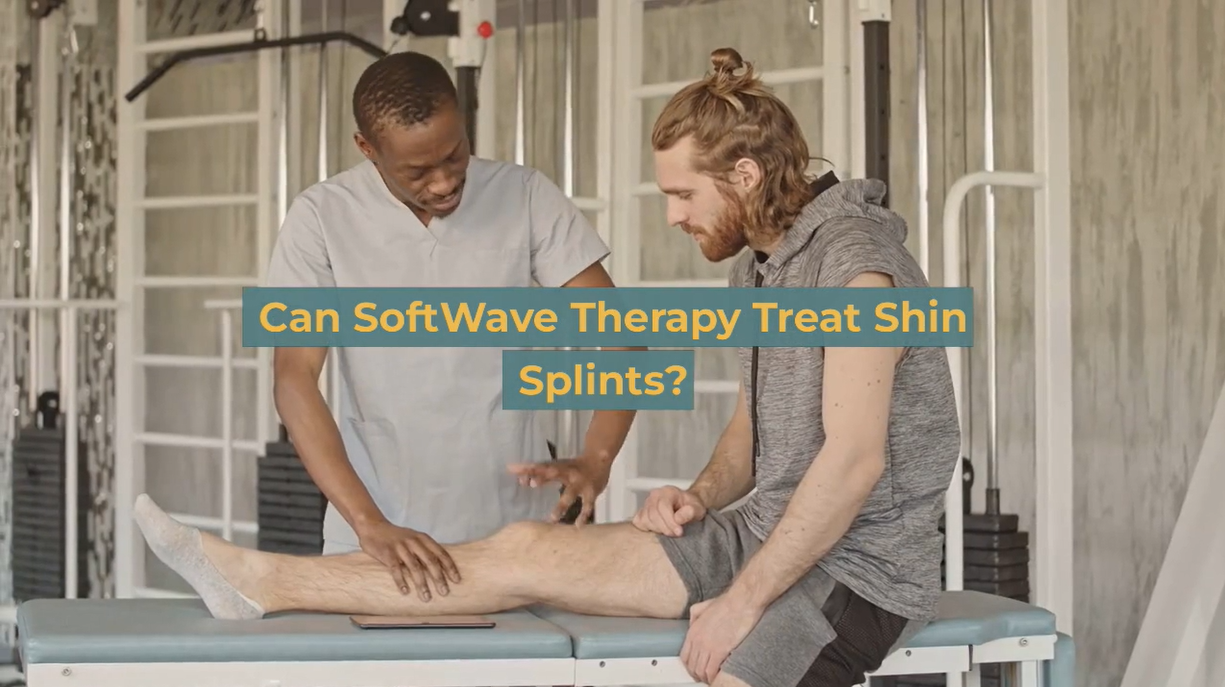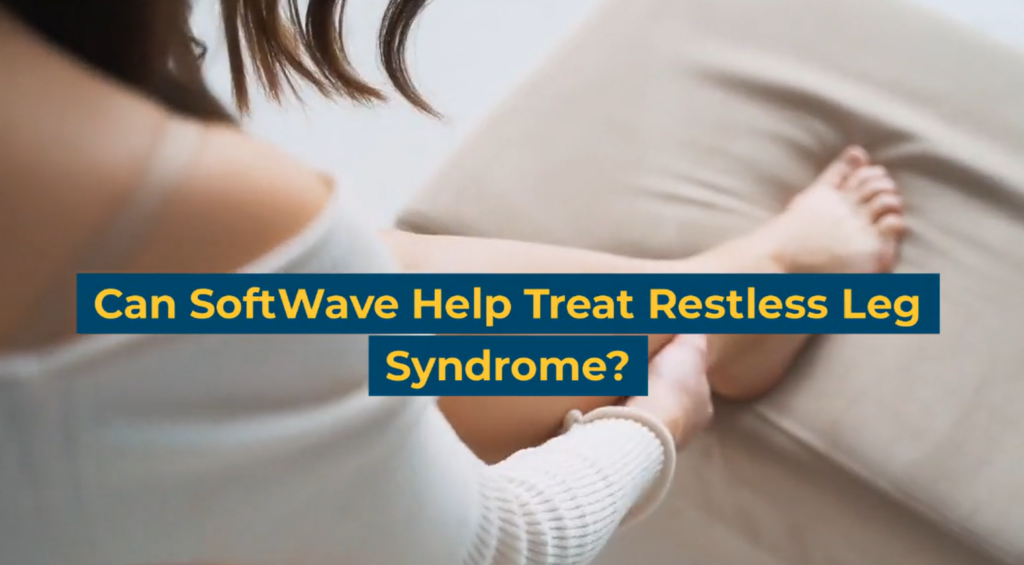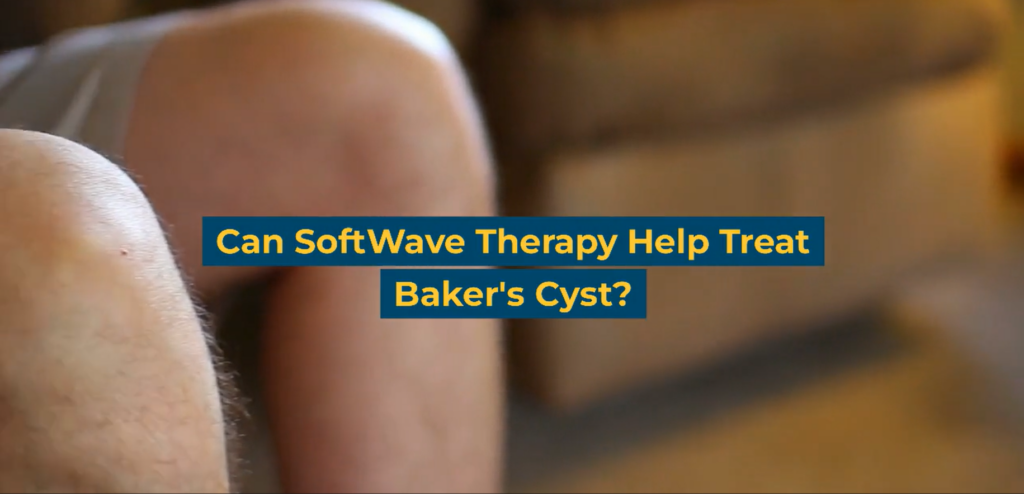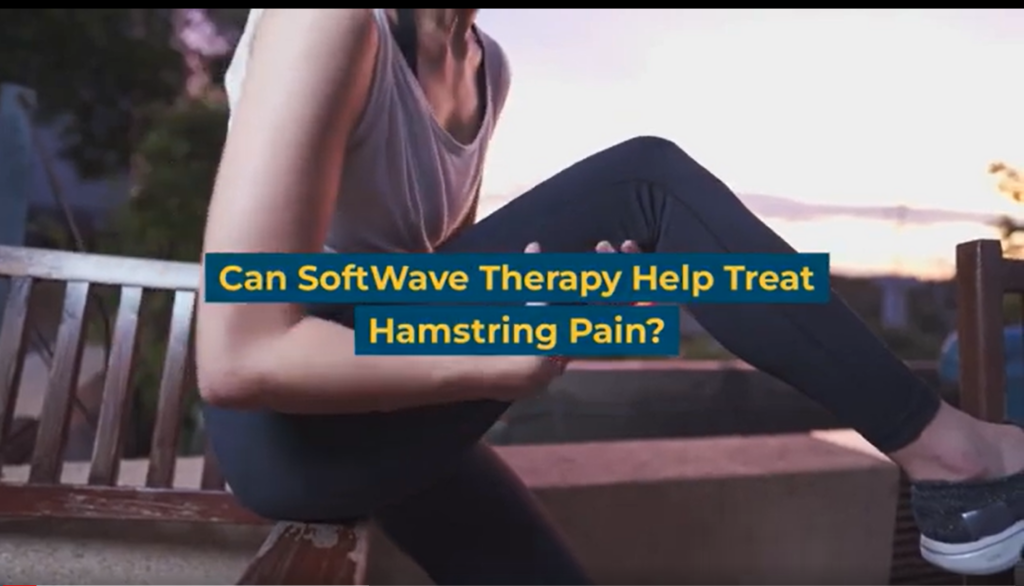Can SoftWave Therapy Treat Shin Splints?
Shin splints, a common overuse injury, can affect anyone from beginner runners to seasoned athletes. The intense pain associated with it can make it difficult to continue with physical activity. While traditional treatments for shin splints can be effective, they often require weeks to recover fully. Fortunately, SoftWave therapy is a treatment option that speeds up the healing process, allowing people to return to their activities sooner.
New Patient Special
Try SoftWave for just $69 at a clinic near you and learn if you’re a candidate for full treatment

Understanding Shin Splints: What Are They?
Shin splints are a painful condition typically characterized by discomfort along the shin bone, also known as the tibia. You can feel the pain associated with this condition along the front or inside of the leg, ranging from a dull ache to a sharp pain. In some cases, swelling may also be present. Overuse is often the cause of shin splints, which can lead to small tears in the muscles and tissues surrounding the shin bone.
While shin splints can occur in anyone who engages in activities that put stress on the lower legs, they are more commonly seen in athletes and people who participate in high-impact sports such as running, basketball, and tennis. Those new to a sport or activity, or who have recently increased the intensity or duration of their workouts may also be more susceptible to developing shin splints. Furthermore, individuals with flat feet, high arches, or other biomechanical issues may be more prone to developing shin splints.
Traditional Treatments for Shin Splints
Traditional treatments for shin splints typically involve several different approaches, including:
- Rest: Taking a break from the activity that caused the shin splints is crucial to allow the muscles and tissues to heal. Rest can also help prevent further damage and reduce the risk of developing chronic shin splints.
- Ice: Applying ice to the affected area can help reduce inflammation and alleviate pain. Ice should be applied for 15-20 minutes at a time, several times a day.
- Pain management: Over-the-counter pain relievers such as ibuprofen or acetaminophen may be recommended to manage pain and discomfort.
- Stretching and strengthening exercises: Stretching and strengthening exercises can help prevent future shin splints by improving flexibility and reducing stress on the shin bone. Examples of exercises include toe raises, calf stretches, and ankle circles.
- Orthotics and shoe inserts: Orthotics and shoe inserts can provide extra support and cushioning, reducing the stress on the lower legs. These can be especially helpful for people with flat feet or high arches.
It’s important to note that traditional treatments for shin splints may not be effective for everyone, and some people may require additional or alternative treatments to achieve optimal results.
What is SoftWave Therapy and How Does it Treat Shin Splints?
SoftWave therapy is a non-invasive treatment option that uses broad-focused shockwaves to promote healing and reduce pain associated with shin splints. The therapy involves using a handheld device that emits low-frequency sound waves, which are directed to the affected area of the leg. The waves stimulate blood flow and promote the formation of new blood vessels, which helps to accelerate the healing process.
SoftWave therapy can be especially effective for treating shin splints because it targets the root cause of the problem, which is often inflammation and micro-damage in the muscles and tissues surrounding the shin bone. By promoting blood flow and reducing inflammation, SoftWave therapy can help reduce pain, improve range of motion, and speed up the healing process.
The treatment is performed on an outpatient basis and is generally painless. Patients typically require multiple sessions to achieve optimal results, depending on the severity of the shin splints and the individual patient’s response to treatment. Moreover, SoftWave therapy is often used in conjunction with other treatments, such as rest, stretching, and strengthening exercises, to achieve the best possible outcome for patients with shin splints.
Benefits of SoftWave Therapy for Shin Splints Compared to Other Treatments
SoftWave Therapy is an innovative treatment option for shin splints that offers several benefits compared to traditional treatments. Some of the advantages of SoftWave therapy include:
- Non-invasive: SoftWave Therapy is a non-invasive treatment option, which means it does not require incisions or anesthesia. This makes it a safer and less risky option for patients compared to surgery.
- Faster healing time: SoftWave Therapy has been shown to speed up the healing process by reducing pain and inflammation, while also promoting tissue regeneration. This can lead to a faster recovery time, allowing athletes and active individuals to return to their regular activities more quickly.
- Improved range of motion: By promoting tissue regeneration, SoftWave Therapy can help reduce scar tissue and improve flexibility, allowing patients to move more freely and with less pain.
With its non-invasive approach, faster healing time, and improved range of motion effect, SoftWave Therapy can be a great treatment option for athletes and active individuals looking to return to their regular activities as soon as possible.
Get Back in Shape with the Help of SoftWave Therapy
SoftWave therapy is a safe and effective treatment option for individuals suffering from shin splints. Athletes and active individuals can benefit from SoftWave therapy’s faster healing time, allowing them to return to their regular activities more quickly.
If you’re struggling with shin splints, SoftWave therapy may be the solution you need to get back in shape. Contact a SoftWave provider near you to learn more about this innovative treatment option and how it can help you recover from shin splints.
Disclaimer: The information provided in this blog is for educational and informational purposes only and is not intended as a substitute for professional medical advice, diagnosis, or treatment. The content provided in this blog should not be used to diagnose or treat any health problems or illnesses. Always consult with a qualified healthcare professional before making any changes to your healthcare routine or treatment plan.
New Patient Special
Try SoftWave for just $69 at a clinic near you. No drugs. No surgery. Just relief.





